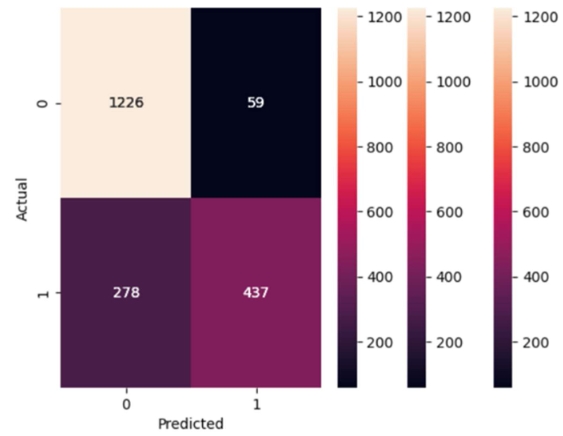The place of emotions in language education from an emotional intelligence perspective
Abstract
The significance of emotions in language education is increasingly acknowledged as a crucial element that impacts both teaching and learning. This article delves into the role of Emotional Intelligence (EI) in enhancing the language learning experience, emphasizing the importance of perceiving, using, understanding, and regulating emotions. Educators, as integral to the learning process, can cultivate more inclusive, supportive, and effective learning environments by integrating emotional awareness and regulation strategies into language teaching. This holistic approach to language education intertwines cognitive and emotional development, emphasizing the practical implications for educators in fostering EI in the language classroom to improve learner engagement and success.
References
[1]Lazarus RS. Emotions and Interpersonal Relationships: Toward a Person‐Centered Conceptualization of Emotions and Coping. Journal of Personality. 2005; 74(1): 9–46. doi: 10.1111/j.1467-6494.2005.00368.x
[2]Bradberry T, Greaves J. The emotional intelligence quick book: Everything you need to know to put your EI to work. Simon and Schuster; 2006.
[3]Stein SJ, Book HE. The EI edge: Emotional intelligence and your success. Jossey-Bass; 2011.
[4]Packard AB. Managing emotions. doi: 10.17760/d20412901
[5]Perera HN, DiGiacomo M. The relationship of trait emotional intelligence with academic performance: A meta-analytic review. Learning and Individual Differences. 2013; 28: 20–33. doi: 10.1016/j.lindif.2013.08.002
[6]Crossman J. The role of relationships and emotions in student perceptions of learning and assessment. Higher Education Research & Development. 2007; 26(3): 313–327. doi: 10.1080/07294360701494328
[7]Salovey P, Mayer JD. Emotional Intelligence. Imagination, Cognition and Personality. 1990; 9(3): 185–211. doi: 10.2190/dugg-p24e-52wk-6cdg
[8]Goleman D. Emotional intelligence: Why it can matter more than IQ. Bloomsbury; 1996.
[9]Mayer JD, Salovey P. What is emotional intelligence? In: Sluyter DJ (editor). Emotional development and emotional intelligence: Educational implications. Basic Books; 1997. pp. 3–34.
[10]Mayer JD, Caruso DR, Salovey P. The Ability Model of Emotional Intelligence: Principles and Updates. Emotion Review. 2016; 8(4): 290–300. doi: 10.1177/1754073916639667
[11]Oz H, Demirezen M, Pourfeiz J. Emotional Intelligence and Attitudes Towards Foreign Language Learning: Pursuit of Relevance and Implications. Procedia - Social and Behavioral Sciences. 2015; 186: 416–423. doi: 10.1016/j.sbspro.2015.04.118
[12]Skordoulis M, Koukounaras Liagkis M, Sidiropoulos G, et al. Emotional Intelligence and Workplace Conflict Resolution: The Case of Secondary Education Teachers in Greece. International Journal of Research in Education and Science. 2020; 6(4): 521. doi: 10.46328/ijres.v6i4.1224
[13]Mamat NH, Ismail NAH. Integration of emotional intelligence in teaching practice among university teachers in higher education. Malaysian Journal of Learning and Instruction. 2021; 18(2): 69–102. doi: 10.32890/mjli2021.18.2.3
[14]Khassawneh O, Mohammad T, Ben-Abdallah R, et al. The Relationship between Emotional Intelligence and Educators’ Performance in Higher Education Sector. Behavioral Sciences. 2022; 12(12): 511. doi: 10.3390/bs12120511
[15]Trad M, Alayoubi MO, Abdul Khalek R, et al. Assessing the influence of emotional intelligence on teachers’ performance in Lebanese private education institutions. Higher Education, Skills and Work-Based Learning. 2021; 12(3): 556–573. doi: 10.1108/heswbl-12-2020-0268
[16]Eteng-Uket S, Njaka RC. Predictive power of grit and emotional intelligence on research anxiety experience of students. American Journal of Education and Learning. 2023; 8(1): 63–75. doi: 10.55284/ajel.v8i1.875
[17]Lee MY, Kutty FM. Emotional Intelligence and Professional Identity of Student Teachers During Practicum. International Journal of Academic Research in Business and Social Sciences. 2023; 13(4). doi: 10.6007/ijarbss/v13-i4/16736
[18]Dulay H, Burt M. (1977). Remarks on creativity in language acquisition. In: Burt M, Dulay H, & Finocchiaro M (editors). Viewpoints on English as a second language. Regents; 1977. pp. 95–126.
[19]Fehrenbach NR. An overview of SLA theories with a focus on the affective filter hypothesis [Master’s thesis]. University of Alaska Fairbanks, USA; 2020.
[20]Dewaele JM. Reflections on the emotional and psychological aspects of foreign language learning and use. Anglistik: International journal of English Studies. 2011; 22(1): 23–42.
[21]Dörnyei Z, Muir C. Creating a motivating classroom environment. In: Gao X (editor). Second handbook of English language teaching. Springer; 2019. pp. 719–736.
[22]Vygotsky LS. Mind in society: The development of higher psychological processes. Harvard University Press; 1978.
[23]Huang X, Lajoie SP. Social emotional interaction in collaborative learning: Why it matters and how can we measure it? Social Sciences & Humanities Open. 2023; 7(1): 100447. doi: 10.1016/j.ssaho.2023.100447
[24]Mänty K, Järvenoja H, Törmänen T. Socio-emotional interaction in collaborative learning: Combining individual emotional experiences and group-level emotion regulation. International Journal of Educational Research. 2020; 102: 101589. doi: 10.1016/j.ijer.2020.101589
[25]Sucaromana U. Contribution to Language Teaching and Learning: A Review of Emotional Intelligence. English Language Teaching. 2012; 5(9). doi: 10.5539/elt.v5n9p54
[26]Dwyer J, Hopwood N. The business communication handbook. Cengage AU; 2019.
[27]Antonopoulou H. The Value of Emotional Intelligence: Self-Awareness, Self-Regulation, Motivation, and Empathy as Key Components. Technium Education and Humanities. 2024; 8: 78–92. doi: 10.47577/teh.v8i.9719
[28]Morin A. Self‐Awareness Part 1: Definition, Measures, Effects, Functions, and Antecedents. Social and Personality Psychology Compass. 2011; 5(10): 807–823. doi: 10.1111/j.1751-9004.2011.00387.x
[29]Eurich T. What self-awareness really is (and how to cultivate it)? Harvard Business Review. Available online: https://hbr.org/2018/01/what-self-awareness-really-is-and-how-to-cultivate-it (accessed on 1 October 2024).
[30]Vohs KD, Baumeister RF. Understanding self-regulation: An Introduction. In: Baumeister RF & Vohs KD (editors). Handbook of self-regulation: Research, theory and its applications. Guilford Press; 2004. pp. 1–12.
[31]Taherkhani R, Moradi R. The relationships among self‐regulation, emotional intelligence, willingness to communicate, and reading comprehension of Persian foreign language learners: Structural equation modeling. Foreign Language Annals. 2022; 55(3): 742–768. doi: 10.1111/flan.12610
[32]Elizondo K, Valenzuela R, Pestana JV, et al. Self‐regulation and procrastination in college students: A tale of motivation, strategy, and perseverance. Psychology in the Schools. 2023; 61(3): 887–902. doi: 10.1002/pits.23088
[33]Oxford RL. 2 Toward a Psychology of Well- Being for Language Learners: The ‘EMPATHICS’ Vision. Positive Psychology in SLA. Published online December 31, 2016: 10–88. doi: 10.21832/9781783095360-003
[34]Taheri H, sadighi F, Bagheri MS, et al. EFL learners’ L2 achievement and its relationship with cognitive intelligence, emotional intelligence, learning styles, and language learning strategies. Cogent Education. 2019; 6(1). doi: 10.1080/2331186x.2019.1655882
[35]Graham S, Weiner B. (1996). Theories and principles of motivation. In: Berliner DC & Calfee RC (editors). Handbook of educational psychology. New York: Simon & Schuster Macmillan; 1996. pp. 63784.
[36]Thao LT, Thuy PT, Thi NA, et al. Impacts of Emotional Intelligence on Second Language Acquisition: English-Major Students’ Perspectives. Sage Open. 2023; 13(4). doi: 10.1177/21582440231212065
[37]Ioannidou F, Konstantikaki V. Empathy and emotional intelligence: What is it really about?. International Journal of Caring Sciences. 2008; 1(3): 118–123.
[38]Mercer S. 3 Seeing the World Through Your Eyes: Empathy in Language Learning and Teaching. Positive Psychology in SLA. Published online December 31, 2016: 91–111. doi: 10.21832/9781783095360-004
[39]Oz H. Emotional Intelligence as A Predictor of L2 Communication. Procedia - Social and Behavioral Sciences. 2015; 186: 424–430. doi: 10.1016/j.sbspro.2015.04.117
[40]Paolini A. Social Emotional Learning: Role of the School Counselor in Promoting College and Career Readiness. Anatolian Journal of Education. 2019; 4(1). doi: 10.29333/aje.2019.411a
[41]Chen C. Empathy in Language Learning and Its Inspiration to the Development of Intercultural Communicative Competence. Theory and Practice in Language Studies. 2013; 3(12). doi: 10.4304/tpls.3.12.2267-2273
[42]Fan L, Cui F. Mindfulness, self-efficacy, and self-regulation as predictors of psychological well-being in EFL learners. Frontiers in Psychology. 2024; 15. doi: 10.3389/fpsyg.2024.1332002
[43]Oxford RL. Teaching and researching language learning strategies: Self-regulation in context. Routledge; 2016.
[44]llen J, Cohen J. Emotional intelligence in classrooms and in schools: What we see in the educational setting. In: Murphy KR (editor). A critique of emotional intelligence. Pennsylvania State University; 2006. pp. 125–139.
[45]Morilla-García C. The Role of Emotional Intelligence in Bilingual Education: A Study on The Improvement of the Oral Language Skill. Multidisciplinary Journal of Educational Research. 2017; 7(1): 27. doi: 10.17583/remie.2017.1840
[46]Shah AP, Galantino ML. (2019). Building emotional intelligence for student success: A pilot study. Perspectives of the ASHA Special Interest Groups. 2019; 4(6): 1445–1461. doi: 10.1044/2019_PERSP-19-00101
[47]Mercer S, Gkonou C. Teaching with heart and soul. In: Gregersen T & MacIntyre PD (editors). Innovative practices in language teacher education. Springer; 2017. pp. 103–124.
[48]Mitchell S. The effect of social-emotional learning on language proficiency [PhD thesis]. Caldwell University, USA; 2020.
[49]Russell V. Language anxiety and the online learner. Foreign Language Annals. 2020; 53(2): 338–352. doi: 10.1111/flan.12461
[50]Li C, Huang J, Li B. The predictive effects of classroom environment and trait emotional intelligence on Foreign Language Enjoyment and Anxiety. System. 2021; 96: 102393. doi: 10.1016/j.system.2020.102393
[51]Richards JC. Exploring Emotions in Language Teaching. RELC Journal. 2020; 53(1): 225–239. doi: 10.1177/0033688220927531
[52]Shafiee Rad H, Jafarpour A. Effects of Well-being, Grit, Emotion Regulation, and Resilience Interventions on L2 Learners’ Writing Skills. Reading & Writing Quarterly. 2022; 39(3): 228–247. doi: 10.1080/10573569.2022.2096517
[53]Oleet JB, Yu C. Examining the Role and Effect of Emotions in Adults’ Online Learning. Utilizing Emotional Experience for Best Learning Design Practices. Published online October 22, 2024: 155–204. doi: 10.4018/979-8-3693-2663-3.ch006
[54]Tengberg M, Olin-Scheller C. Developing Critical Reading of Argumentative Text: Effects of a Comprehension Strategy Intervention. Journal of Language Teaching and Research. 2016; 7(4): 635. doi: 10.17507/jltr.0704.02
[55]González‐Lloret M. Collaborative tasks for online language teaching. Foreign Language Annals. 2020; 53(2): 260–269. doi: 10.1111/flan.12466
[56]Kos T. Enhancing Young Learners’ Collaboration Through Tasks–What Can Language Pedagogy Learn from Research? Teaching English as a Second or Foreign Language--TESL-EJ. 2024; 28(2). doi: 10.55593/ej.28110a2
[57]Borge M, Soto JA, Aldemir T, et al. Building Multicultural Competence by Fostering Collaborative Skills. Teaching of Psychology. 2020; 49(1): 85–92. doi: 10.1177/0098628320977421
[58]Paolini AC. Social Emotional Learning: Key to Career Readiness. Anatolian Journal of Education. 2020; 5(1): 125–134. doi: 10.29333/aje.2020.5112a
[59]Fisher D, Frey N, & Almarode J. (2020). Student learning communities: A springboard for academic and social-emotional development. ASCD; 2020.
[60]Philibert CT. Everyday SEL in High School. Published online June 24, 2021. doi: 10.4324/9781003141068
[61]Morgan WJ, Katz J. Mindfulness meditation and foreign language classroom anxiety: Findings from a randomized control trial. Foreign Language Annals. 2021; 54(2): 389–409. doi: 10.1111/flan.12525
[62]Zeilhofer L, Sasao Y. Mindful language learning: The effects of college students’ mindfulness on short-term vocabulary retention. System. 2022; 110: 102909. doi: 10.1016/j.system.2022.102909
[63]Zeilhofer L. Mindfulness in the foreign language classroom: Influence on academic achievement and awareness. Language Teaching Research. 2020; 27(1): 96–114. doi: 10.1177/1362168820934624
[64]Hutchins D, Goldstein Hode M. Exploring faculty and staff development of cultural competence through communicative learning in an online diversity course. Journal of Diversity in Higher Education. 2021; 14(4): 468–479. doi: 10.1037/dhe0000162
[65]Lash M, Madrid Akpovo S, Cushner K. Developing the intercultural competence of early childhood preservice teachers: preparing teachers for culturally diverse classrooms. Journal of Early Childhood Teacher Education. 2020; 43(1): 105–126. doi: 10.1080/10901027.2020.1832631
Copyright (c) 2024 İbrahim Halil Topal

This work is licensed under a Creative Commons Attribution 4.0 International License.









